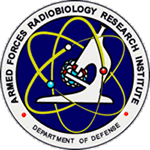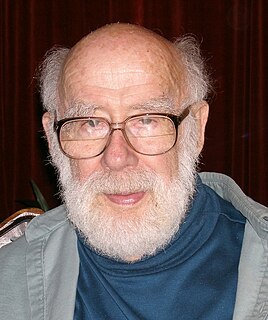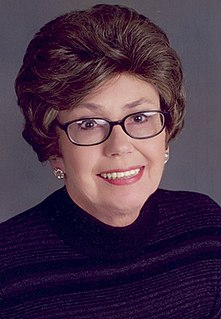 W
WThe Armed Forces Radiobiology Research Institute (AFRRI) is an American triservice research laboratory in Bethesda, Maryland chartered by Congress in 1960 and formally established in 1961. It conducts research in the field of radiobiology and related matters which are essential to the operational and medical support of the U.S. Department of Defense (DoD) and the U.S. military services. AFRRI provides services and performs cooperative research with other federal and civilian agencies and institutions.
 W
WInternational Physicians for the Prevention of Nuclear War (IPPNW) is a non-partisan federation of national medical groups in 63 countries, representing doctors, medical students, other health workers, and concerned people who share the goal of creating a more peaceful and secure world free from the threat of nuclear annihilation. The organization's headquarters is in Malden, Massachusetts. IPPNW was awarded the Nobel Peace Prize in 1985.
 W
WYury Bandazhevsky, former director of the Medical Institute in Gomel (Belarus), is a scientist working on consequences of the Chernobyl disaster. He was the founding Rector of Gomel State Medical Institute in Belarus in 1991, specially dedicated to scientific work on the 1986 Chernobyl disaster. Since 2013, Professor Bandazhevsky has been leading Chernobyl Ecology and Health https://chernobyl-health.org/ in Ukraine, supported by European Commission. In the aftermath of Chernobyl accident and also 2020 April wildfire near Chernobyl, Bandazhevsky has been calling for international help.
 W
WGilbert Wheeler Beebe, also known as Gil Beebe, was an American epidemiologist and statistician known for monumental studies of radiation-related mortality and morbidity among populations exposed to ionizing radiation from the atomic bombings of Hiroshima and Nagasaki in 1945 and the Chernobyl reactor accident in 1986.
 W
WRosalie Bertell was an American scientist, author, environmental activist, epidemiologist, and Catholic nun. Bertell was a sister of the Grey Nuns of the Sacred Heart, best known for her work in the field of ionizing radiation. A dual citizen of Canada and the United States, she worked in environmental health since 1970. In 1986, she was awarded the Right Livelihood Award for "raising public awareness about the destruction of the biosphere and human gene pool, especially by low-level radiation."
 W
WElizabeth M. Bright early investigator, researcher and physiologist from Harvard and Woods Hole that collaborated with noted oceanographer Alfred C. Redfield to study the effects of radiation on various animal models
 W
WChristopher Busby is a British scientist primarily studying the health effects of internal ionising radiation. Busby is a director of Green Audit Limited, a private company, and scientific advisor to the Low Level Radiation Campaign (LLRC).
 W
WCaptain John Henry Ebersole, M.D., MC USN a pioneer in submarine medicine and radiation oncology, selected by Admiral Hyman G. Rickover to serve as medical officer aboard the US Navy's first two nuclear powered submarines, the USS Nautilus and the USS Seawolf. He was the radiologist for NASA that screened the Mercury Seven astronauts for Project Mercury. Ebersole was the radiologist responsible for the x-rays taken during the autopsy of John F. Kennedy on 22 November 1963 at Bethesda Naval Medical Center.
 W
WJohn William Gofman was an American scientist and advocate. He was Professor Emeritus of Molecular and Cell Biology at University of California at Berkeley.
 W
WJoseph Gilbert Hamilton was an American professor of Medical Physics, Experimental Medicine, General Medicine, and Experimental Radiology as well as director (1948-1957) of the Crocker Laboratory, part of the Lawrence Berkeley National Laboratory. Hamilton studied the medical effects of exposure to radioactive isotopes, which included the use of unsuspecting human subjects.
 W
WLouis Henry Hempelmann Jr, was an American physician who was the director of the Health Group at the Manhattan Project's Los Alamos Laboratory during World War II. After the war he was involved in research into radiology. A paper he published in the New England Journal of Medicine in 1949 warned of the dangers of using fluoroscopes to measure the size of children's feet.
 W
WPaula Hertwig was a German biologist and politician. Her research focused on radiation health effects. Hertwig was the first woman to habilitate at the then Friedrich-Wilhelms-Universität Berlin in the field of zoology. She was also the first biologist at a German university. Hertwig is one of the founders of radiation genetics alongside Emmy Stein. Hertwig-Weyers syndrome, which describes oligodactyly in humans as a result of radiation exposure, is named after her and her colleague, Helmut Weyers.
 W
WHarold Carpenter Hodge (1904–1990) was a well-known toxicologist who published close to 300 papers and 5 books. He was the first president of the Society of Toxicology in 1960. He received a BS from Illinois Wesleyan University and a PhD in 1930 from the State University of Iowa, publishing his first paper in 1927. He received a number of honors and awards during his career.
 W
WFloy Agnes "Aggie" Lee was a biologist who worked on the Manhattan Project at Los Alamos as a hematology technician.
 W
WClarence Chancelum Lushbaugh, Jr. was an American physician and pathologist. He was considered an expert in radiological accidents and injuries, as well as a pioneer in radiation safety research, and he is known for his controversial research involving human subjects.
 W
WHermann Joseph Muller was an American geneticist, educator, and Nobel laureate best known for his work on the physiological and genetic effects of radiation (mutagenesis), as well as his outspoken political beliefs. Muller frequently warned of long-term dangers of radioactive fallout from nuclear war and nuclear testing, which resulted in greater public scrutiny of these practices.
 W
WClaudius Regaud was a French doctor and biologist, one of the pioneers in radiotherapy at the Curie Institute.
 W
WLouise Marie Zibold Reiss was an American physician who coordinated what became known as the Baby Tooth Survey, in which deciduous teeth from children living in the St. Louis, Missouri area who were born in the 1950s and 1960s were collected and analyzed over a period of 12 years. The results of the survey showed that children born in 1963 had levels of strontium-90 in their teeth that were 50 times higher than those found in children born in 1950, before the advent of widespread nuclear weapons testing. The findings helped convince U.S. President John F. Kennedy to sign the Partial Nuclear Test Ban Treaty with the United Kingdom and Soviet Union, which ended the above-ground testing of nuclear weapons that placed the greatest amounts of nuclear fallout into the atmosphere.
 W
WSir Joseph Rotblat was a Polish physicist, a self-described "Pole with a British passport". Rotblat worked on Tube Alloys and the Manhattan Project during World War II, but left the Los Alamos Laboratory on grounds of conscience after it became clear that Germany had ceased development of an atomic bomb in 1942. His work on nuclear fallout was a major contribution toward the ratification of the 1963 Partial Nuclear Test Ban Treaty. A signatory of the 1955 Russell–Einstein Manifesto, he was secretary-general of the Pugwash Conferences on Science and World Affairs from their founding until 1973 and shared, with the Pugwash Conferences, the 1995 Nobel Peace Prize "for efforts to diminish the part played by nuclear arms in international affairs and, in the longer run, to eliminate such arms."
 W
WDr Alice Mary Stewart, née Naish was a British physician and epidemiologist specialising in social medicine and the effects of radiation on health. Her study of radiation-induced illness among workers at the Hanford plutonium production plant, Washington, is frequently cited by those who seek to demonstrate that even very low doses of radiation cause substantial hazard. She was the first person to demonstrate the link between x-rays of pregnant women and high cancer rates in their children. She was awarded the Right Livelihood Award in 1986 "for bringing to light in the face of official opposition the real dangers of low-level radiation."
 W
WLauriston S. Taylor was an American physicist known for his work in the field of radiation protection and measurement.
 W
WJan Cornelis Terlouw is a retired Dutch politician of the Democrats 66 (D66) party and physicist and author.
 W
WElla B. Tyree was an American medical researcher. She worked in the mid-twentieth century investigating effects of radiation poisoning in animals and potential treatments.
 W
WShields Warren was an American pathologist. He was among the first to study the pathology of radioactive fallout. Warren influenced and mentored Eleanor Josephine Macdonald, epidemiologist and cancer researcher.
 W
WStafford Leak Warren was an American physician and radiologist who was a pioneer in the field of nuclear medicine and best known for his invention of the mammogram. Warren developed the technique of producing stereoscopic images of the breast with X-rays while working in the Department of Radiology at the University of Rochester School of Medicine.